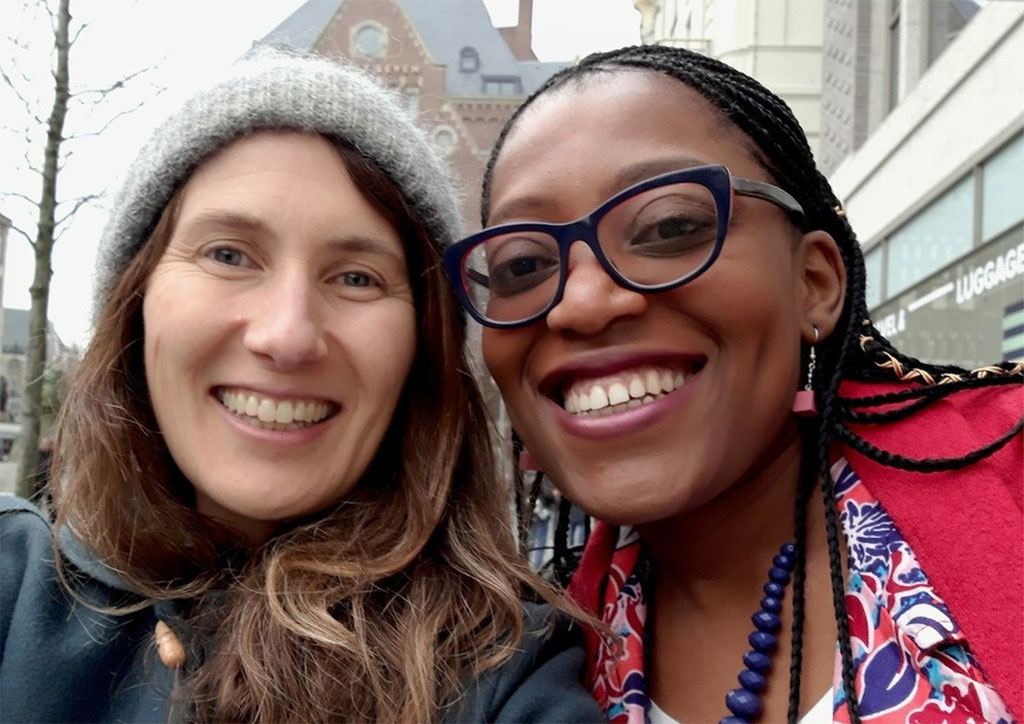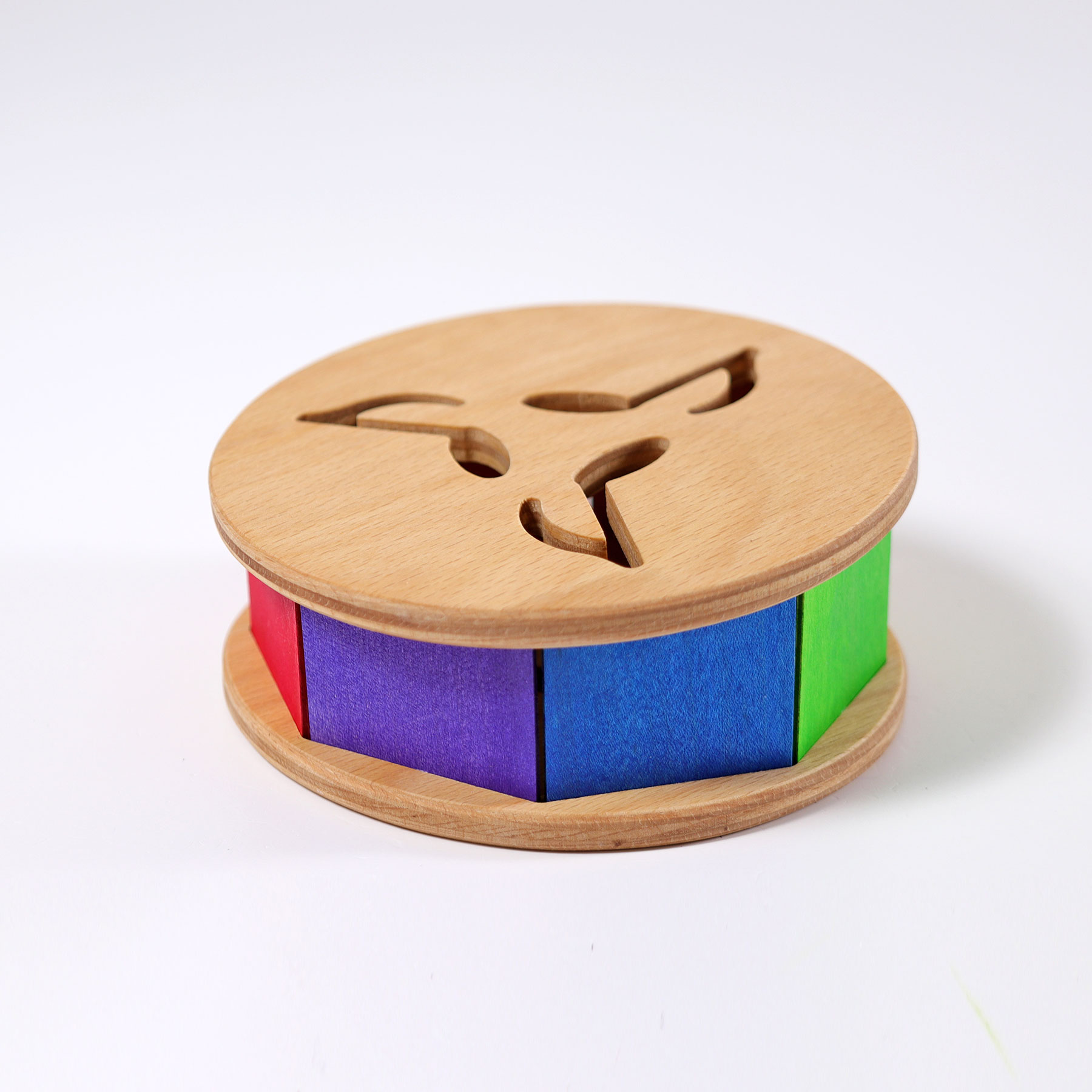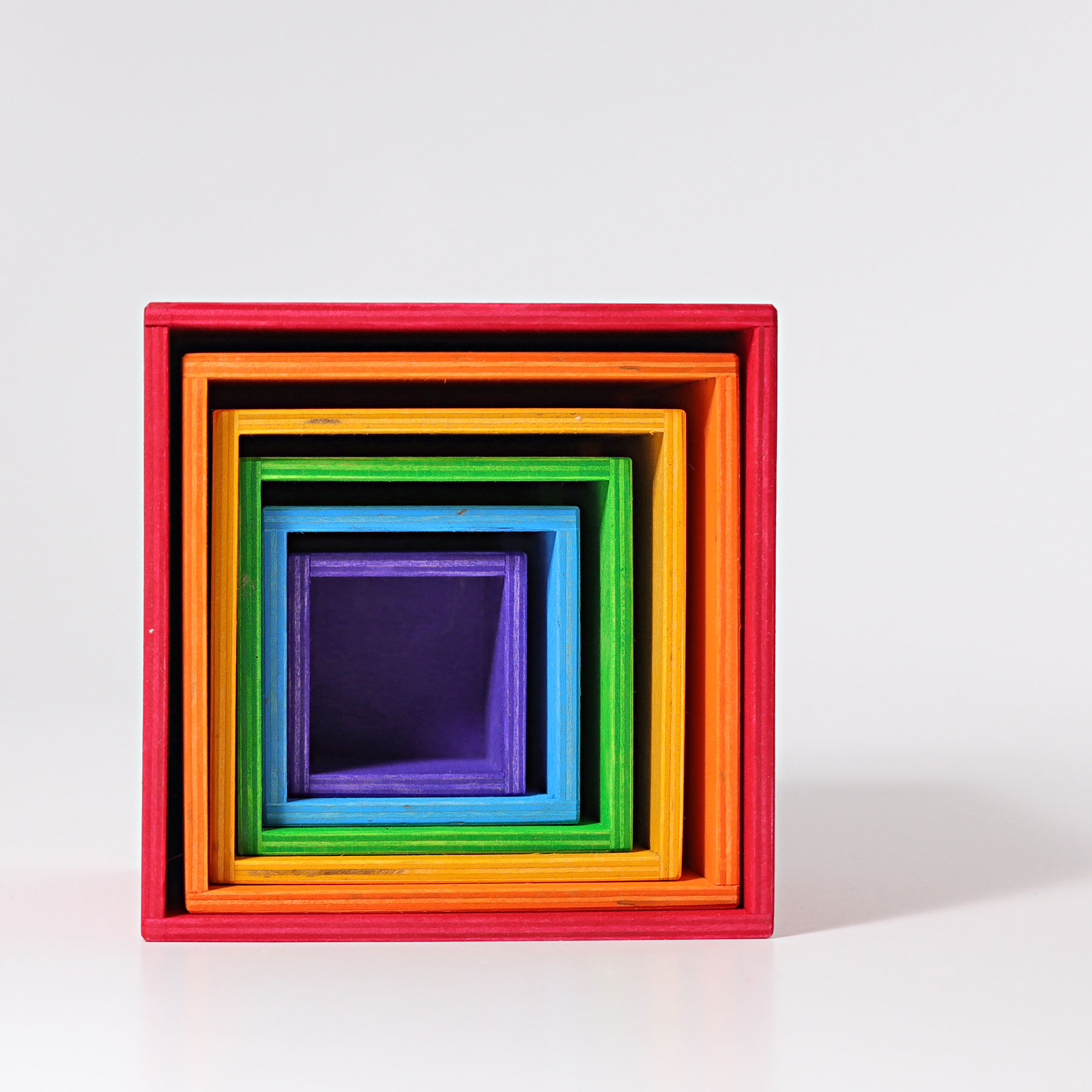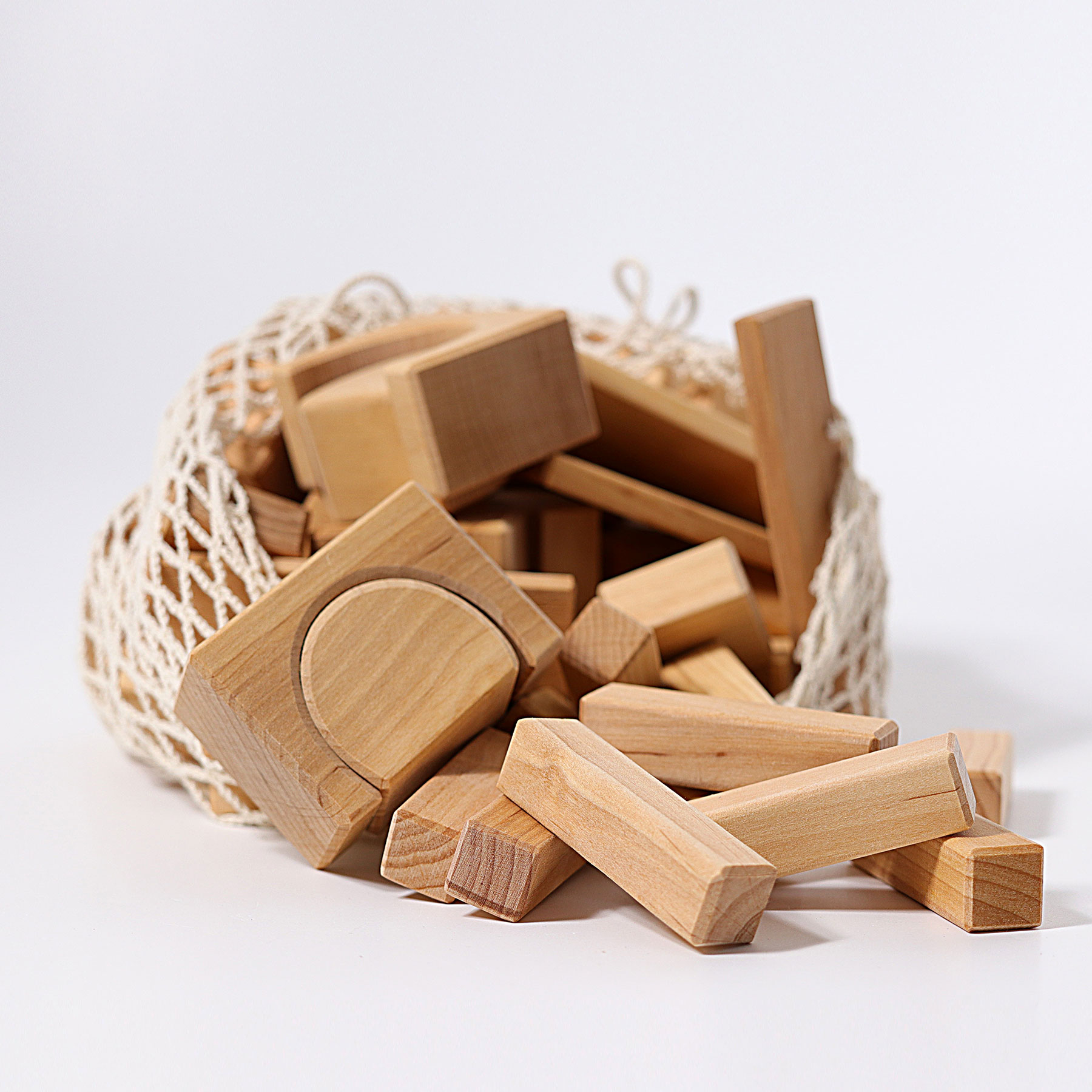Less is more - an interview with Montessori experts Simone Davies and Junnifa Uzodike

GRIMM’S: Prospective parents want to do everything right, especially with their first child. They are told from all sides that they now need this and that in order to be optimally prepared for the arrival of the new family member. In "The Montessori Baby", however, you write the opposite. It says "Babies do not need that much". And "The Montessori Toddler" also says "less is more". Can you expand on this aspect a little further?
Absolutely. We can set up our homes intentionally with less toys and instead display only a handful of well-selected activities. These activities will be based on what we observe our child is interested in and what they are practising right now.
When there is less to choose from it is so much easier to make a choice. It’s like going to a supermarket with unlimited choices of breakfast cereal to buy - it can be so overwhelming. If we are only given a small selection of things we like, it will be easier to make a good choice for us. It’s exactly the same for our children. Having less choices allows them to concentrate for longer on these activities as there are less distractions and they have more possibility to come up with their own creative solutions as limitation leads to creativity.

GRIMM’S: If you follow your advice, you can definitely save a lot of money! (If only I had known that beforehand! :-D) Ideally, this amount should be invested in quality and - as you write - in a "more natural version". Why is the natural aspect important? Do you think babies, toddlers and children already have a feel for natural materials, such as untreated wood as opposed to moulded wood or even plastic?
We like to choose a few good quality materials. These will last longer, are more sustainable, are able to be passed on to future family members or friends, and are beautiful for exploring. Children under 6 years old are sensorial learners so they make discoveries through their touch, smell, hearing, taste and what they see. Natural materials like untreated wood give them a lot of sensorial feedback - the weight, texture, and even the warmth of the material can be sensed by the child and are visually appealing too. We also know that young children love exploring with their mouth and these natural materials are safe to explore in this way.

GRIMM’S: In the first year of life, babies are constantly receiving new "updates". They are soon able to decide for themselves whether and with which of the play materials on offer they want to interact. Can you make a few recommendations for baby's first Montessori shelf? What can young parents offer their offspring?
As a baby lies on a mat to practice stretching their body, reaching for their toes, learning to roll, slither and crawl, we can make a low shelf or basket available with a few attractive materials for them to choose from and explore. This makes it easy for them to access (rather than storing them out of reach in a toy box).
They are becoming familiar with their hands so we can provide a few rattles that invite different grasps and hand movements. Balls of different sizes and textures also invite exploration and builds dexterity. They can also encourage slithering and crawling when they roll away. Cylinders are also good options for this reason. They roll away but not too fast or too far so that the baby can experience success in crawling after them and retrieving them.
.jpg?ts=1724913764)
GRIMM’S: And what is better to do without and why?
There are many toys available for babies that are active toys which we prefer to avoid. These are toys that often sing, flash, beep and make noises. With such toys, the child is being entertained by the toy rather than being an active participant. Rather we can look for passive toys that allow the child to be active. The baby can make discoveries or find new ways to manipulate the toy. Babies learn through active experience and by doing instead of being entertained.
GRIMM’S: In the book "The Montessori Toddler" we learn that Montessori activities have a beginning, a middle and an end and that we should encourage the child to put the play materials back in their original place when the task is finished. But what should be done if a child has created a small play world with building blocks, for example? Should this also be cleared away or should we leave it where it is so that the child can play with it at a later date?
In a Montessori classroom, most of the activities that we offer the child have a beginning, a middle, and a end. They choose an activity from the shelf, they play with it, and then at the end they put the activity back when they are done ready for another child. In our homes, we may choose to be more relaxed about putting things back, for example, to put everything away before snack time, lunch time, or bed time. If our child has built a small play world with blocks, we can ask them if they would like to keep it for later or if they would like to put it away. Or if we need to put it away to make space for the rest of the family, we can offer them to take a photo of it to record it before putting it away.

GRIMM’S: That’s a lovely idea! And how do we deal with it when the child combines the play materials from different Montessori trays to pursue his or her own play idea?
In a Montessori classroom, many of the sensorial materials have connections and it is exciting when the children discover these connections. We observe them as always to understand. Often they make connections and discoveries we might not have thought to show them. Other activities that are set up on trays for specific activities are generally not combined. At home we can definitely support exploration and combination of different materials as the child’s creativity can come through and they might make cool discoveries. We can also encourage restoring the materials when they are finished with their exploration.
GRIMM’S: In "The Montessori Toddler" there is a chapter entitled "What about non-Montessori Toys?". Among other things, it recommends wooden building blocks for open-ended play. Why are they so valuable?
Wooden building blocks allow for creativity, collaboration, balance, design and a whole lot of fun. There are endless creations our children can make with blocks. What we as an adult might think may be used for making a road, can become a train track, a supermarket, a playground, a farm, or a church. It allows our children to take things they have seen in their real life and make their own creations based on these ideas. And sometimes the blocks are used simply to balance one on top of the other, or to create walls or other designs. There is so much learning and playing that can be enjoyed.
.jpg?ts=1724913764)
GRIMM’S: The above-mentioned chapter also states that children attending a Montessori school should have opportunities at home for "(...) unstructured play, opportunities to create, time outdoors, and time for rest". Why are these things so important in addition to Montessori activities?
We love to say that the best gift we can give our child is the gift of time. When we allow the child large blocks of uninterrupted time they have time to get bored and come up with the most creative ideas. They have time to be in and connect with nature which can be the antidote to the over scheduled busy world of many children today. They can climb in a tree, collect rocks for a nature collection, take off their shoes and socks to get their feet in the mud or creek, or make a mandala from found treasures. And rest allows the body and mind to be restored, to day dream, to watch the clouds, and help their nervous systems to relax and unwind. To become themselves again.
GRIMM’S: Let's stay on the subject of toys towards the end of our interview. Your latest book "The Montessori Child" for children aged 3 to 12 is also about play materials. You recommend choosing toys "that will grow with our child, items that can continue to be used over time, can be used in a new way (...)." Do you have any recommendations for our readers? Which purchases are really worthwhile over the baby, toddler and child periods?
Yes, we love finding activities that have longevity that our child can keep using as they grow. We love the Sound and Color Wheel for babies - when they are babies, they will be delighted to make it move, hear the sounds, and repeat again and again. As they become toddlers, they may enjoy to make it roll, to try making some rhythms with it, and begin to learn the colours as they play. Older children enjoy coming back to wheel to see how it works. They may build a ramp, find other colours that are the same as on the wheel, or use it as an instrument in their band.
Similarly the Large Rainbow Set of Boxes grow with our our child. As toddlers they love to learn to nest the boxes and build towers, gradually working to make a tower. As they grow they become interested in learning to grade the boxes by size - big and small, bigger and smaller, and biggest and smallest. The colours can be used to sort objects or be used to be part of a bigger creation they are building. They can even be used for academic explorations like measurement, volume, area etc. For even older children the Building Set Ammonite is a beautiful and challenging puzzle for older children. When it is complete it is like a piece of artwork with the pieces fitting together to make a magnificent spiral. The children can also enjoy using the pieces for building in creative ways.

GRIMM’S: Last question: Can the Montessori principles be applied to an entire human life or does it end at some point? After "The Montessori Baby", "The Montessori Toddler" and "The Montessori Child", will there also be "The Montessori Teenager" and "The Montessori Adult"?
The Montessori principles can be applied at any age. We always say it’s never too early to start with Montessori and equally it’s never too late to start. We hope that our books become beautiful guides for families to apply the Montessori principles in their homes.
“The Montessori Baby” covers from conception through the first year learning how to observe and understand how to support our baby’s development; “The Montessori Toddler” covers 1 to 3 year olds guiding us to see how toddlers can be brilliant as well as how to manage tantrums and cooperation; and “The Montessori Child” is a guidebook for children from 3 to 12 year olds about how we can continue to apply the Montessori principles as our children enter the pre-school and school years. “The Montessori Child” also includes a comprehensive chapter on the adolescent years so we are prepared for the years ahead.
Each of the books includes a chapter on the adult as we are such a fundamental part of the children’s environment and how we can prepare ourselves. The Montessori principles are also now being used in elderly care settings allowing our elders to remain capable and independent for many more years.
Montessori truly can be used at any age and any stage.

-
 €18.95*
€18.95* -
 €54.95*
€54.95* -
 €89.95*
€89.95* -
 €17.95*
€17.95* -
 €79.95*
€79.95* -
 €26.95*
€26.95* -
 €14.90*
€14.90* -
 €36.50*
€36.50* -
 €52.90*
€52.90* -
 €64.95*
€64.95* -
 €64.95*
€64.95* -
 €54.95*
€54.95*
